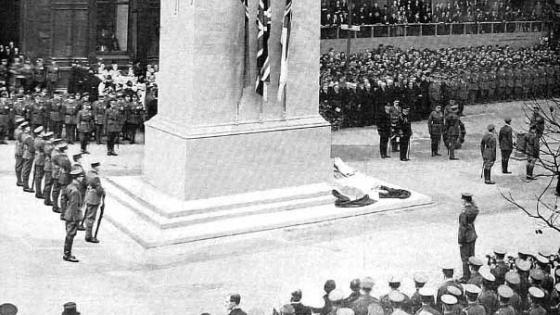The role of economic factors
How much power do economic factors have in deciding the struggle for global power? To explain the outcome of WWI economic historians stress the increasingly mechanised nature of warfare, waged for years on end by massed forces. They emphasise things like numbers of tanks, guns, ships, airplanes and ammunition, or aggregate indices of munitions production. Military historians object that this leaves no room for factors such as leadership, discipline, heroism, or villainy.
The opposition between cold figures and hot blood is to some extent false. Leadership and psychology clearly did matter, but less so than in previous eras. In WWI, multi-million man armies took the field and remained there for years, giving and taking appalling losses without disintegrating. In these circumstances of ‘total war’, numbers of men and the volume of supplies played the decisive role (Chickering and Förster 2000). Before 1914, Total War was not possible because people lived much closer to subsistence. Too many people were required to labour in the fields and workshops just to feed and clothe the population, and it cost too much for government officials to count, tax, and direct them into mass combat. The Total War era lasted only between 1914 and 1945, after which point it became impossible again as nuclear weapons made devastating military force available to any small rich or large poor country.
Which factors mattered most?
Some economic historians stress the importance of size. Ferguson (1998) argues that given the overwhelming size advantage of the Allies in terms of population and production in 1914, the outcome of World War I was inevitable. He also concludes that given the scale of their advantage, the Allies should have won quickly. He sees the Allies as squandering their advantage through mismanagement, with economic factors only coming into play after much time had passed.
But the quality as well as the quantity of national resources mattered. The main factor in quality was the level of peacetime development, which can be measured by the average real income per capita. Richer countries were able to mobilise production, public finance, soldiers, and weapons in disproportion to their economic size; the level of development acted as a multiplier of size. For Britain, control of the vast but impoverished territory of India mattered little compared with access to the rich markets of the US.
Allies versus Central Powers: The quantity and quality of resources, 1914-1918
Table 1 shows how the balance of resources between the Allies and the Central Powers changed over time, taking account of quality as well as quantity. Quality is measured by GDP per capita expressed in international dollars at 1990 prices. In 1914 the Triple Entente of the UK, France, and Russia was augmented by Serbia and Japan plus the British and French colonies and Dominions, while the Central Powers of Austria-Hungary and Germany were joined by the Ottoman Empire. In 1916 the Central Powers were joined by Bulgaria and the Allies were joined by a second wave of countries including Italy, Portugal and Romania (though Italy defaulted on its treaty obligations). By the beginning of 1918 the Allies had lost Russia to the 1917 Revolution, but had been joined by US and a further wave of countries.
The Triple Entente was hampered by the low level of development in the British and French colonies, but also by Russian economic backwardness. For their part, the Central Powers were held back by low levels of development in the Ottoman Empire, Bulgaria, and also the Hungarian half of the Habsburg Empire. The output of less developed economies was less available for fighting because:
- much of it was needed to meet subsistence requirements of the population,
- it was difficult to mobilise because of the lack of development in the government administration, and
- in the case of colonies, it was also difficult to mobilise because of its distance from the main theatres of war.
Table 1. The alliances in World War I: Resources of 1913

Source: Broadberry and Harrison (2005: 7-10).
Table 2 computes the size and development ratios for three benchmark dates: November 1914, November 1916, and November 1918. The ratios are calculated for great powers only (i.e. excluding poor colonies) as well as for the total alliances.
If attention is confined to the quantity of resources, the situation appears hopeless for the Central Powers from the outset. In 1914, the Allies had access to 5.2 times the population, 11.5 times the territory, and 2.9 times the output of the Central Powers. Looking only at great powers, the Allied advantage was smaller in population and output, but larger in territory, since the German and Turkish colonies were largely in the deserts of Africa and the Middle East.
But quality also matters. The Allied advantage in population and output was limited at this stage by low average incomes in Russia and in the British and French colonies. Allied average incomes were only 60% of the Central Powers or 80% if attention is confined to great powers (counting Russia as a great power). By November 1916, the Allied advantage had grown moderately in population and output, but the Central Powers retained an advantage in average incomes. By November 1918, the situation had changed dramatically, since the United States had replaced Russia. Confining attention to great powers only, although the Allied advantage in population and territory decreased, the advantage in output actually increased markedly. For the first time, the Allies had an advantage in average incomes amongst the great powers (but not for the alliances as a whole). It took time for the American presence to be felt on the battlefield, but it sealed the fate of the Central Powers.
Table 2. Allies versus central powers: Size and development ratios

Source: Broadberry and Harrison (2005: 11).
Agriculture and mobilisation
Why did being less developed than the UK and the USA matter for the Central Powers, and also for Russia, which dropped out of the war on the Allied side following the Bolshevik Revolution of 1917? The answer can be found in the performance of agriculture during World War I. Austria-Hungary, Turkey, Germany, and Russia all ran short of food long before they ran out of guns and shells, because of the negative impact of peasant agriculture on mobilisation. Contemporary observers expect a country like Germany – where peasant farming remained important – to have had an advantage because most people could feed themselves. By contrast, Britain with its high dependence on food imports, was expected to starve. This analysis could not have been more wrong. When war broke out, British farmers were offered higher prices and – responding normally to incentives – boosted production. Expansion was relatively easy because British farming had contracted as grain was imported from the New World, leaving large reserves of unused land (Olson 1963). The high productivity of farm labour also meant that large increases of farm output were possible with few additional resources.
By contrast, in Germany wartime mobilisation redirected resources away from farming – particularly men and horses. Once in the army, these men and horses still needed to be fed, requiring the diversion of food supplies from rural households to government purchasers. But the motivation for farmers to sell food was reduced, not increased. Many farmers were peasants who grew food partly for their own consumption. What they sold they took to market primarily to buy manufactures for their families. But war dried up the supply of manufactures to the countryside, as the industrial sector concentrated on supplying the armed forces with weapons and munitions. Peasant farmers thus retreated into subsistence activities and the economy began to disintegrate. What food the government could get was given to the army, since hungry soldiers won’t fight. Urban workers were thus caught in a double squeeze between the peasantry and the army.
As the war continued, the market supply of food dried up in the German, Austro-Hungarian, and Ottoman Empires, and also in Russia. Food prices soared and urban famine set in. Government actions often made things worse. The German, Austrian, and Russian governments all began to ration food to their urban populations, while attempting to buy food from farmers at low fixed prices because of budgetary problems. Weighed down by peasant agriculture, economic mobilisation in the Central Powers led to urban famine, revolutionary insurrection, and the downfall of emperors – just as it did in Russia, which was the first economy to crack under the strain in 1917. The same process began in France, which still had a large peasant sector in World War I, but Allied support nipped it in the bud.
Conclusions
Voltaire wrote “It is said that God is always on the side of the big battalions” (often misattributed to Napoleon). Here, the importance of resources has been reaffirmed, but with a more nuanced view: quality matters as well as quantity. The level of economic development is crucial in the mobilisation of resources for the ‘total’ warfare that characterised the first half of the twentieth century. This does not mean that only economics mattered – but in WWI economic factors were decisive once the Central Powers failed to achieve an early victory on the basis of non-economic advantages. This failure gave the Allies the chance to bring economics decisively into the equation.
Editor’s note: This is part of a series of Vox columns by leading economic historians on the First World War, which will be collected in a Vox eBook at the end of the year: “The Economics of the First World War”, edited by Nicholas Crafts, Kevin O’Rourke, and Alan Taylor.
References
Broadberry, S and M Harrison (eds.) (2005), The Economics of World War I, Cambridge: Cambridge University Press.
Chickering, R and S Förster (eds.) (2000), Great War, Total War: Combat and Mobilization on the Western Front, 1914-1918, Cambridge: Cambridge University Press.
Ferguson, N (1998), The Pity of War, London: Allen Lane.
Olson, M (1963), The Economics of the Wartime Shortage: A History of British Food Supplies in the Napoleonic War and in World Wars I and II, Durham, NC: Duke University Press.




